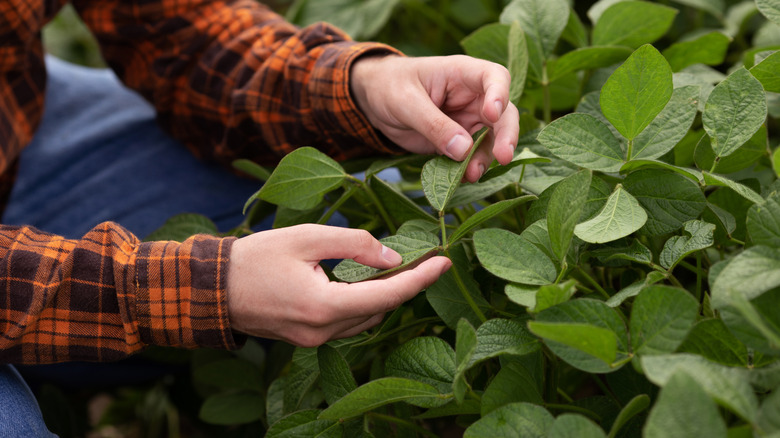Why Aren't Your Leaves Changing Colors And Should You Be Concerned?
For many people, summer is the best time of the year, but even summer lovers have to admit there's an undeniable joy that comes from the first signs of autumn. As you wrap yourself in a cardigan and settle down on the front porch with your first pumpkin spice latte of the season, you might look around and wonder, "Why does everything still look so ... green?" It's not all in your head — autumn and all its color-changing glory really is coming later and later each year. When the leaves finally do change, you may also notice that their colors aren't as vibrant as they used to be. Enjoying changing deciduous trees around your home is one of the best parts of the autumn season, but warmer, drier summers are causing fall foliage to emerge later than usual.
It's normal for the onset time of fall colors to vary every year, but researchers have noticed a pattern that correlates later fall foliage with the results of climate change. What processes in particular cause leaves to shift in color later than usual? And other than delaying some of your favorite fall festivities, how might these changes affect trees' long-term health? Here's what you need to know about delayed leaf color changes and what you can do to support your trees.
Hotter summers bring slower, duller falls
To understand why trees are shifting later, it's important to understand why they change color in the first place. A combination of shorter days, cooler temperatures, and moist soil triggers trees to start shutting off chlorophyll production, essentially going into hibernation for the winter. As chlorophyll structures fade away, carotenoids and anthocyanins become visible, giving leaves their vibrant red, orange, yellow, and violet hues. A change in average temperature or moisture levels during the summer can affect when this change happens and how colorful the results are. For example, a severe summer drought or unusually high temperatures can cause fall colors to emerge up to a few weeks later and look less vibrant than usual.
Droughts and higher-than-average temperatures are known results of climate change, meaning that fall could keep pushing back as the globe continues to heat up. "Fall's changing colors have been delayed up to four days per decade in North American forests since the early 1980s," forest ecologist Andy Finton explained to Better Homes & Gardens. This change hasn't been fast enough for most people to notice, but it is a shift that could become more apparent over time, especially for older generations and people living in the Northeastern and Southern states.
Focus on lawn care this fall
If summers are getting hotter and fall is coming later, should you be concerned about the trees in your yard? For now, a few weeks' delay in fall colors isn't a major concern for trees. However, keep in mind that fall provides an important transition period, when trees can shed their leaves before impending winter storms. If a winter storm suddenly strikes while trees are still loaded with leaves, the additional weight of snow and ice could cause their branches to break.
What can you do to support your trees' health, and what does this mean for autumn yardwork? You can't control the summer temperatures, but keeping your trees well-hydrated during the spring and early summer will ensure that they have the best odds of producing colorful fall foliage. Because leaves will be falling a little later than usual, hold off of raking leaves and invest a little more time into lawn care. Aerate your lawn to improve airflow and water drainage. This will help your trees absorb more moisture in spring and summer, which will lead to better foliage next fall. Finally, trim dead and dying branches and apply mulch around your trees to improve moisture retention and keep their roots warm through winter.


